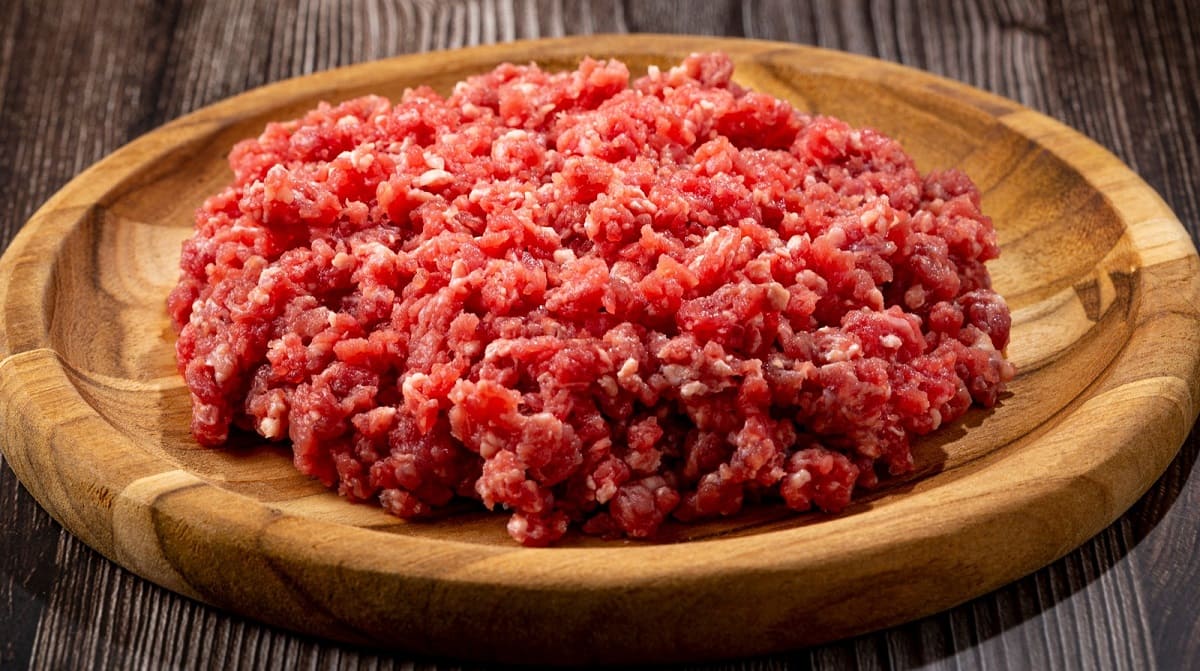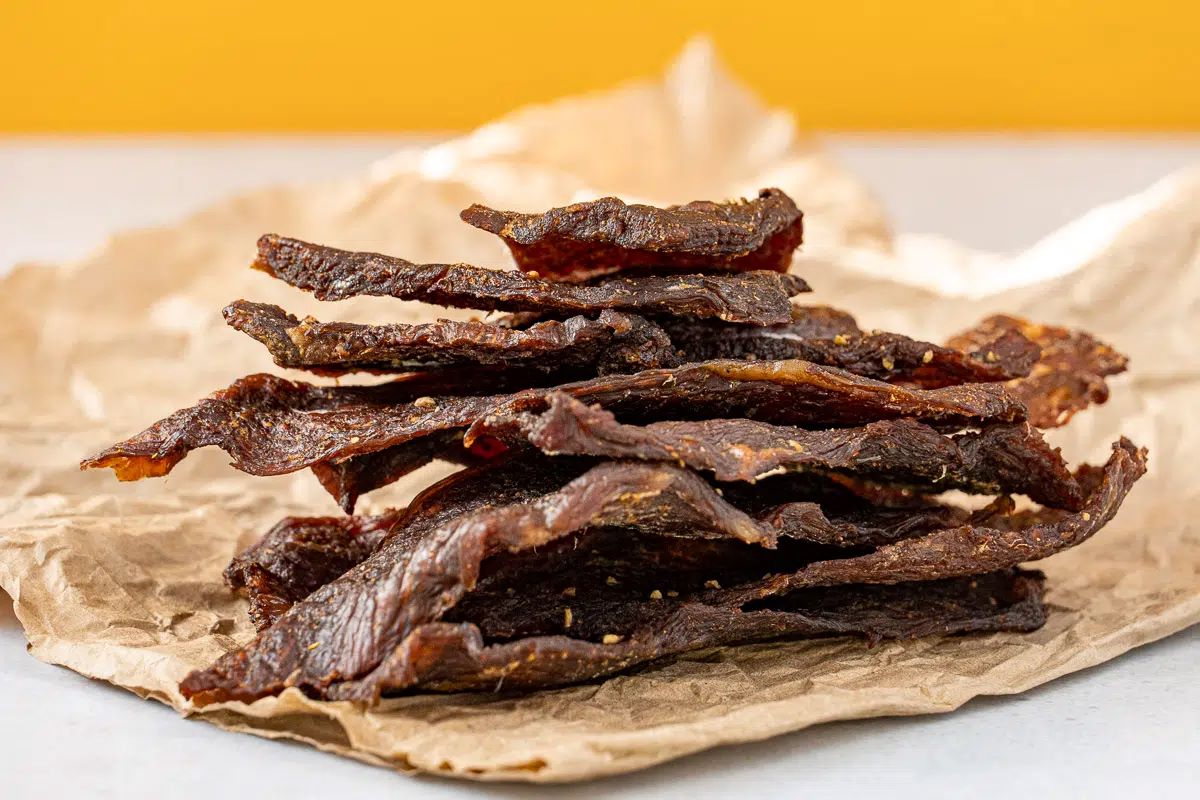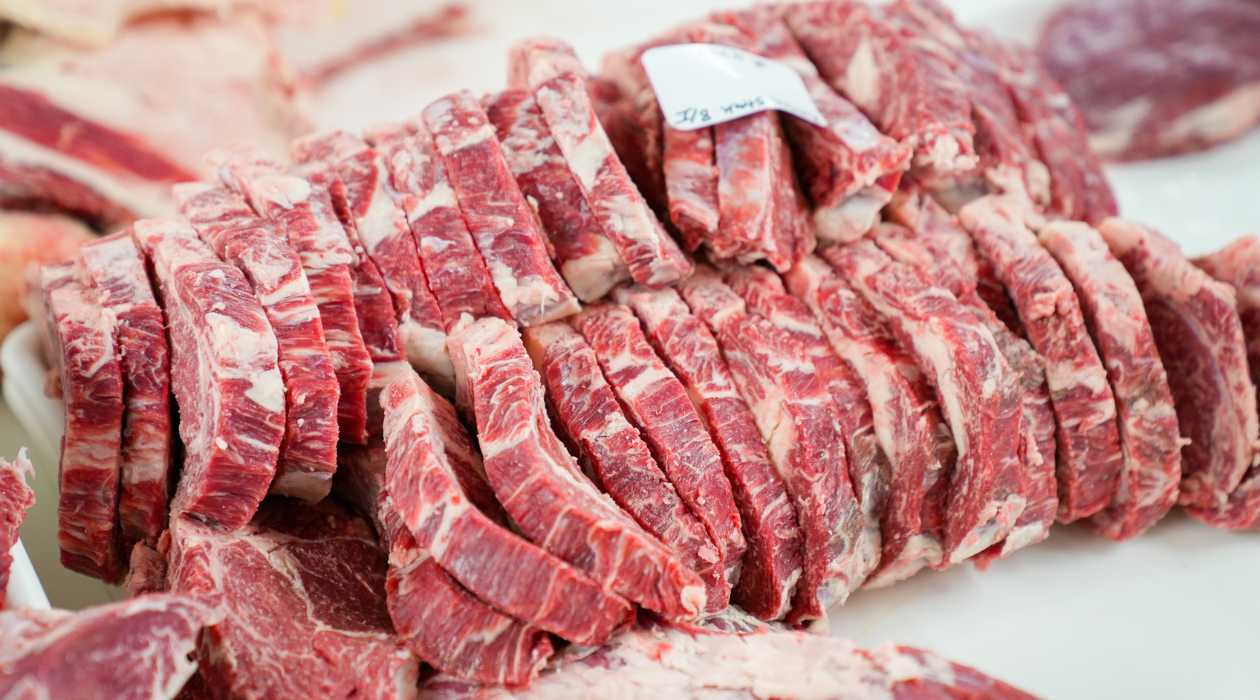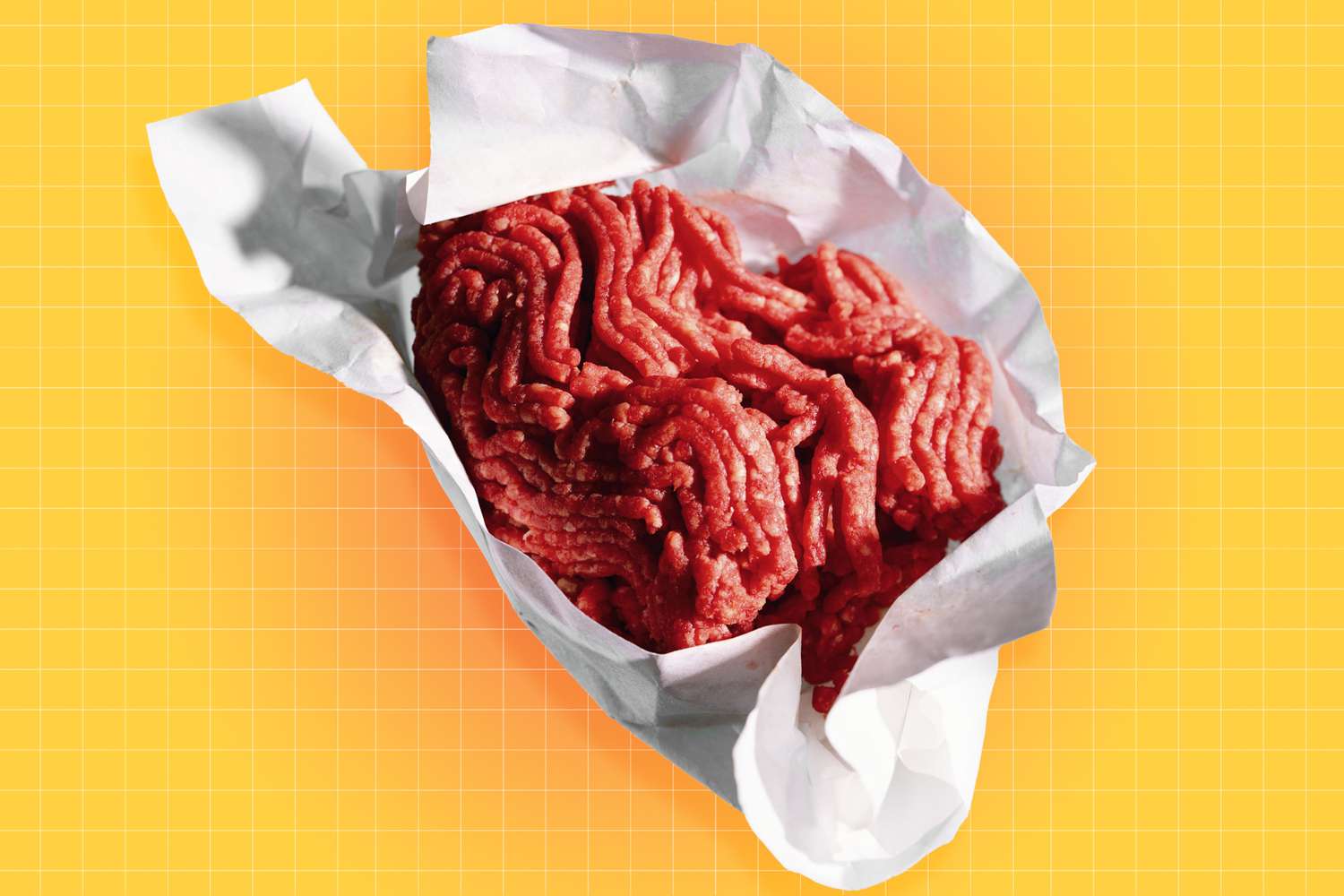

Articles
How To Store Beef Tallow
Modified: January 6, 2024
Learn how to store beef tallow properly with these helpful articles. Find tips and tricks to keep your beef tallow fresh and ready for use.
(Many of the links in this article redirect to a specific reviewed product. Your purchase of these products through affiliate links helps to generate commission for Storables.com, at no extra cost. Learn more)
Introduction
Welcome to the world of beef tallow storage! If you’re a culinary enthusiast or someone who loves to experiment with different cooking techniques, then you may be familiar with the wonders of beef tallow. It is a versatile cooking fat that has been used for centuries in various cuisines all over the world.
Beef tallow is the rendered fat obtained from beef suet, which is the hard fat found around the kidneys and loins of cattle. It is prized for its high smoke point, making it ideal for high-temperature cooking methods such as frying, roasting, and sautéing. But what happens when you have excess beef tallow and need to store it properly to maintain its quality and freshness?
In this article, we will explore the various aspects of beef tallow storage, including why it is important to store it correctly, the factors to consider, the proper storage containers, steps to store beef tallow, tips for long-term storage, and common mistakes to avoid.
So, whether you are a home cook who likes to render your own beef tallow or a professional chef who uses large quantities of it, read on to discover the best practices for storing beef tallow and ensuring it stays in its prime condition for future culinary adventures.
Key Takeaways:
- Properly storing beef tallow is crucial for maintaining its quality, freshness, and shelf life. Consider factors like quality, contamination prevention, and suitable containers to ensure longevity.
- Utilize tips such as freezing, vacuum sealing, and FIFO method to maximize the shelf life of beef tallow. Avoid common mistakes like exposure to air and moisture, inadequate packaging, and improper storage temperature.
Read more: How To Store Beef
What is Beef Tallow?
Beef tallow is a rendered fat that is derived from the suet of cattle. It is a traditional cooking fat that has been used for centuries in various culinary applications. To understand what beef tallow is, let’s break it down.
The suet is the hard fat that surrounds the kidneys and loins of cattle. This fat is carefully trimmed and separated from the meat. It is then processed through a heating and cooling process known as rendering. This process helps to separate the solid fat from any impurities and moisture, resulting in a smooth and creamy consistency.
The end product is a pure, white, and odorless fat that solidifies at room temperature. Beef tallow has a high smoking point, typically around 400°F (204°C), which makes it ideal for high-temperature cooking methods like frying and roasting.
Apart from its culinary uses, beef tallow has also found its place in various other industries. It is commonly used in the production of soaps, candles, and skincare products due to its moisturizing and emollient properties. It is also used in the manufacturing of lubricants and as a component in animal feed.
Now that we know what beef tallow is, let’s explore the importance of properly storing it to maintain its quality and freshness.
Why Store Beef Tallow?
Properly storing beef tallow is crucial for several reasons. Here are some key reasons why you should store beef tallow:
- Prolonged Shelf Life: Storing beef tallow correctly can significantly extend its shelf life. Fat, like any other food product, is prone to spoilage when exposed to heat, light, moisture, and air. By storing beef tallow in the right conditions, you can prevent it from going rancid and preserve its freshness for a longer period.
- Cost-Effective: If you frequently use beef tallow in your cooking or other applications, it is more cost-effective to buy it in bulk and store it rather than purchasing small quantities frequently. Properly stored beef tallow can last for months, allowing you to save money in the long run.
- Convenience: Storing beef tallow ensures that you always have a ready supply on hand whenever you need it. Whether you’re planning for a big cooking project or simply want to have it available for everyday use, having a stash of beef tallow in your pantry can save you time and effort.
- Flavor and Quality Preservation: Beef tallow, when stored correctly, retains its original flavor and quality. Improper storage can lead to oxidation and off-flavors, compromising the taste and overall quality of your dishes. By storing beef tallow properly, you can maintain its integrity and ensure that it enhances the flavor of your culinary creations.
- Reducing Food Waste: Proper storage of beef tallow helps to minimize food waste. When beef tallow goes bad, it not only affects its taste but also renders it unsuitable for consumption. By practicing proper storage techniques, you can minimize waste and get the most out of your beef tallow.
By understanding the importance of storing beef tallow and its benefits, you can make the most out of this versatile cooking fat and enjoy its many uses in your culinary adventures. Let’s now delve into the factors to consider before storing beef tallow to ensure its longevity and quality.
Factors to Consider Before Storing Beef Tallow
Before you embark on storing beef tallow, there are several key factors to consider to ensure that it remains fresh and of high quality throughout its storage period. Let’s explore these factors:
- Quality of the Beef Tallow: Start with high-quality beef tallow to ensure the best results. Look for tallow that is fresh, odorless, and free from any signs of spoilage. Using high-quality tallow as a starting point will contribute to the overall longevity and taste of the stored product.
- Rendering Process: Ensure that the rendering process of the beef tallow is done properly. Proper rendering eliminates impurities and moisture, which can contribute to the growth of bacteria and mold. A well-rendered tallow will have a smooth texture and optimal fat content, making it suitable for long-term storage.
- Preventing Contamination: It is essential to prevent cross-contamination when storing beef tallow. Use clean utensils and containers that are free from any residue or odors that could impact the quality of the tallow. Ensure that the storage area is clean and free from any potential contaminants.
- Temperature: Beef tallow should be stored in a cool, dark place away from direct heat and sunlight. Heat can cause the fat to spoil, while exposure to light can lead to oxidation. Optimal storage temperature for beef tallow ranges between 50-70°F (10-21°C).
- Air and Moisture Exposure: Beef tallow should be protected from air and moisture to prevent oxidation and rancidity. Ensure that the storage containers are airtight and moisture-proof. Oxygen and moisture can hasten the degradation process of the fat, leading to an unpleasant taste and odor.
- Container Selection: Choose the right storage container for beef tallow. Glass jars or food-grade plastic containers with tight-fitting lids are ideal. Avoid using containers made of reactive materials such as metal, as they can impact the taste and quality of the tallow.
- Labeling and Dating: Properly label and date your stored beef tallow containers. This helps you keep track of the storage time and ensures you use the oldest tallow first, maintaining a rotation system.
By considering these factors before storing beef tallow, you can ensure its longevity, quality, and safety. Now, let’s move on to discussing the proper storage containers for beef tallow.
Proper Storage Containers for Beef Tallow
Choosing the right storage containers for beef tallow is essential to maintain its freshness and quality over time. Here are some key considerations when selecting storage containers:
- Material: Glass jars or food-grade plastic containers are excellent choices for storing beef tallow. Both materials are non-reactive, meaning they won’t interact with the fat and alter its taste or quality. Make sure the containers are made from food-safe materials to ensure the tallow remains safe for consumption.
- Airtight and Leak-Proof: Ensure that the storage containers are airtight and leak-proof. This will prevent air, moisture, and odors from seeping in, which can cause the tallow to spoil faster. A tight-fitting lid is essential to create a sealed environment inside the container.
- Size and Shape: Consider the size and shape of the container based on your storage needs. It is generally recommended to store beef tallow in smaller containers rather than one large container. This allows you to use only the necessary amount of tallow without exposing the rest to air each time you open the container.
- Transparency: If you opt for glass jars, choose transparent ones. Being able to see the contents helps you identify any changes in color, texture, or signs of spoilage easily. It also allows you to monitor the remaining quantity of tallow.
- Labeling: Labeling the storage containers is important for easy identification. Use labels or adhesive tape to write the contents and date of storage. This ensures proper rotation and avoids confusion when using the beef tallow.
Remember, the goal is to store beef tallow in a container that maintains its freshness, prevents contamination, and protects it from light, heat, air, and moisture. By choosing the right storage containers, you can properly preserve the quality of the beef tallow. Now, let’s move on to the steps involved in storing beef tallow.
Store beef tallow in an airtight container in the refrigerator or freezer to extend its shelf life. This will help prevent it from becoming rancid and maintain its quality for longer.
Read more: How To Store Beef Stew
Steps to Store Beef Tallow
Storing beef tallow properly involves a few simple steps to ensure its longevity and quality. Here’s a step-by-step guide to help you store beef tallow:
- Cool and Strain: Allow the rendered beef tallow to cool down to room temperature. Once cooled, strain it through a fine-mesh sieve or cheesecloth to remove any impurities or solid particles that may have been left behind during the rendering process.
- Choose the Right Storage Containers: Select suitable storage containers made of glass or food-grade plastic. Ensure that the containers are clean, dry, and have airtight lids to prevent moisture, air, and odors from entering.
- Portion and Fill the Containers: Divide the cooled and strained beef tallow into smaller portions that you are likely to use in one go. This allows you to avoid exposing the entire supply of beef tallow to air and contaminants each time you open the container. Fill each container, leaving a small amount of headspace to account for any expansion that may occur during freezing or solidification.
- Seal and Label: Securely seal the containers with their respective airtight lids. Label each container with the date of storage for easy reference. This helps you keep track of the storage time and ensures proper rotation.
- Store in a Cool and Dark Place: Place the filled and labeled containers in a cool and dark storage area, such as a pantry or cupboard, away from direct sunlight and sources of heat. The optimal storage temperature for beef tallow is between 50-70°F (10-21°C).
- Check for Spoilage: Periodically check the stored beef tallow for any signs of spoilage, such as off smells, discoloration, or unusual texture. If you come across any of these signs, discard the affected portion immediately.
By following these simple steps, you can store beef tallow properly and maintain its freshness and quality for an extended period. Now, let’s explore some tips for long-term storage of beef tallow to ensure its optimal shelf life.
Tips for Long-Term Storage of Beef Tallow
If you’re looking to store beef tallow for an extended period, here are some helpful tips to ensure its long-term shelf life:
- Freeze for Extended Storage: If you want to store beef tallow for several months or even up to a year, consider freezing it. Freezing dramatically slows down the oxidation process and helps to preserve the quality of the tallow. Ensure that the containers are freezer-safe and leave adequate headspace to accommodate any expansion.
- Use Vacuum Sealed Bags: For even better long-term storage, consider using vacuum-sealed bags. Vacuum sealing removes excess air, helping to prevent oxidation and freezer burn. This method can prolong the shelf life of beef tallow for an extended period.
- Keep Away from Strong Odors: Beef tallow has the tendency to absorb strong odors from its surroundings. To prevent this, store the tallow away from strong-smelling foods or substances. Ideally, keep it in a separate section of the freezer or pantry.
- Properly Thaw Before Use: If you freeze your beef tallow, ensure you thaw it properly before using it in your recipes. Allow the container to thaw in the refrigerator overnight or use a gentle heating method like placing the container in warm water. Avoid microwaving the tallow directly as it can lead to uneven heating.
- Refrigerate for Short-Term Storage: If you plan to use the beef tallow within a few weeks, refrigeration is a suitable option. Place the sealed containers in the refrigerator to maintain the tallow’s quality and freshness.
- Practice FIFO Method: FIFO stands for “first in, first out.” It’s a good practice to use the oldest beef tallow first to ensure that none of it goes to waste. Prioritize using the earlier dated containers before moving on to the newer ones.
- Note Storage Duration: Keep track of the storage duration of your beef tallow. Labeling the containers with the date of storage and use a marker to indicate an estimate of the recommended storage duration (e.g., “best within 6 months”). This helps you know when it’s time to use or replace the tallow.
By following these tips for long-term storage, you can maximize the shelf life of your beef tallow and enjoy its excellent quality in your cooking for an extended period. However, it’s important to note that over time, stored tallow may develop subtle changes in flavor and texture. Now, let’s discuss some common mistakes to avoid when storing beef tallow.
Common Mistakes to Avoid when Storing Beef Tallow
When it comes to storing beef tallow, there are a few common mistakes that should be avoided to ensure the preservation of its quality and freshness. Let’s take a look at these mistakes:
- Exposure to Air and Moisture: One of the most common mistakes is failing to protect beef tallow from air and moisture. Both oxygen and moisture can lead to oxidation and spoilage. Always ensure that the storage containers are airtight and that the tallow is free from any excess moisture.
- Inadequate Packaging: Using improper storage containers or packaging can also impact the quality of beef tallow. Avoid using containers that are not airtight or made from reactive materials such as metal, as they can contribute to off-flavors and deterioration of the fat.
- Improper Storage Temperature: Storing beef tallow in an area that is too warm or subject to temperature fluctuations can lead to spoilage. Aim to store it in a cool, dark place with a consistent temperature between 50-70°F (10-21°C).
- Storing Near Heat Sources: Placing beef tallow near heat sources, such as stoves, ovens, or direct sunlight, is a mistake to avoid. Exposure to heat can cause the tallow to melt, affecting its texture and increasing the risk of spoilage.
- Not Rotating and Using FIFO Method: Forgetting to use the FIFO method (first in, first out) and not rotating the stored beef tallow can result in older batches going to waste. Always use the oldest tallow first to prevent it from languishing in storage for too long.
- Failure to Label and Date: Neglecting to label and date the stored beef tallow is a common oversight. Proper labeling helps you keep track of the storage time and ensures that you can use the tallow within its recommended shelf life.
- Not Checking for Spoilage: Failing to periodically check the stored beef tallow for any signs of spoilage can be a grave mistake. Make it a habit to inspect the tallow for any off smells, discoloration, or unusual texture. If spoilage is detected, discard the affected portion immediately.
By avoiding these common mistakes and following proper storage practices, you can ensure that your beef tallow stays fresh and maintains its quality over time. Now, let’s summarize what we’ve covered in this article.
Conclusion
Properly storing beef tallow is essential to maintain its quality, freshness, and optimal shelf life. By considering factors such as the quality of the tallow, preventing contamination, and choosing the right storage containers, you can ensure the longevity of the fat. The steps involved in storing beef tallow include cooling and straining, choosing suitable containers, portioning, labeling, and storing in a cool, dark place.
In addition, following tips such as freezing for extended storage, using vacuum-sealed bags, and practicing the FIFO method can help maximize the shelf life of beef tallow. However, it’s important to be mindful of common mistakes to avoid, such as exposure to air and moisture, improper packaging, and storing near heat sources.
By understanding the importance of proper storage and implementing these strategies, you can enjoy the benefits of beef tallow in your culinary endeavors without compromising its integrity. Whether you’re a home cook or a professional chef, proper storage ensures that you always have this versatile cooking fat readily available whenever you need it.
So, don’t let your excess beef tallow go to waste. Take the time to store it correctly and enjoy the convenience, cost-effectiveness, and flavor enhancement it brings to your dishes. Storing beef tallow properly is a small investment of time and effort that yields big rewards in terms of taste and quality. Happy cooking!
Frequently Asked Questions about How To Store Beef Tallow
Was this page helpful?
At Storables.com, we guarantee accurate and reliable information. Our content, validated by Expert Board Contributors, is crafted following stringent Editorial Policies. We're committed to providing you with well-researched, expert-backed insights for all your informational needs.















0 thoughts on “How To Store Beef Tallow”